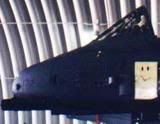|
<BLOCKQUOTE id=quote><font size=1 face="Verdana, Arial, Helvetica" id=quote>quote:<hr height=1 noshade id=quote>
Mudd,
An interesting little fact: It has a low bypass engine, unlike that of the Hbp of the Tomcat and Eagle, but like that of the F-22. I don't know of any pro/con performance differences if the SH had an Hbp engine.
<hr height=1 noshade id=quote></BLOCKQUOTE id=quote></font id=quote><font face="Verdana, Arial, Helvetica" size=2 id=quote>
I wouldn't call the F100 or the F110 high bypass. Depending on the version, the BPR could be as high as .7 (old published numbers for the F100-100) or as low as .36 (-229, off the P&W web site). The published number for the F110 at the GE site is .68. The F404 versions go from .29 to .37 and the F414 is quoted at .29 too. Compared to the 6.2 of the TF34, all the supersonic engines are low BPR.
I can give you insight on how the engine cycle is selected when the "paper is blank". The engine company gives the airframer some digital simulators we call rubber engines. The rubber engine cycle parameters can be tweaked, including power take-off and bleed air as well as By-pass, compressor ratio, turbine inlet temp, etc. The airframers systematicaly run each engine through the prescibed mission profiles and performance points and plot up the trends. They match up the engine cycle that gets them the required stuff and take the fall-out that results elsewhere. Sometimes an obscure performance point sizes the engine, like transonic accel from .9-1.2 @35k ft. Sometimes cruise fuel flow is the driver. For STOL it might be takeoff distance. More likely, many requirements are close to critical simultaneously and are problem children forever. It is true that if some engine operational quirk, like compressor stall, starts happening, all that goes out the window and they can tweak the engine cycle (as well as things like the fuel control, inlet and nozzle schedule) to fix it. For instance, I think I heard that the engine control in the T-45 (RR Adour) needed some fixes to respond better "in the groove" for carrier approaches. I don't know. There are lots of rumors out there. People who know the straight poop on your questions are hard to come by. I'd like to talk to the guys that tried to fix the F111 inlet/TF30 combination. That must have been a pressure cooker.
THE CRAPTOR ENGINEERING TEAM <img src=icon_smile_big.gif border=0 align=middle>
"The F-22...It's the poo"
_________________
????
|





